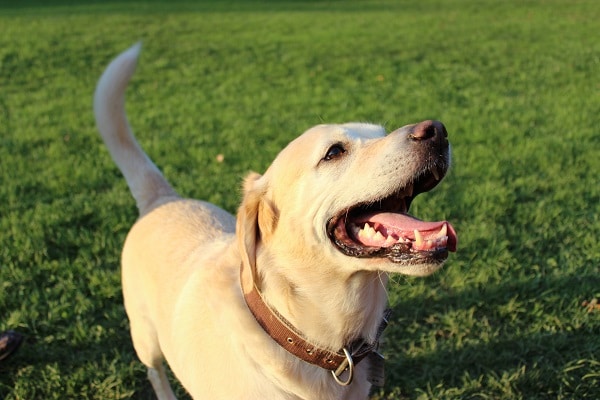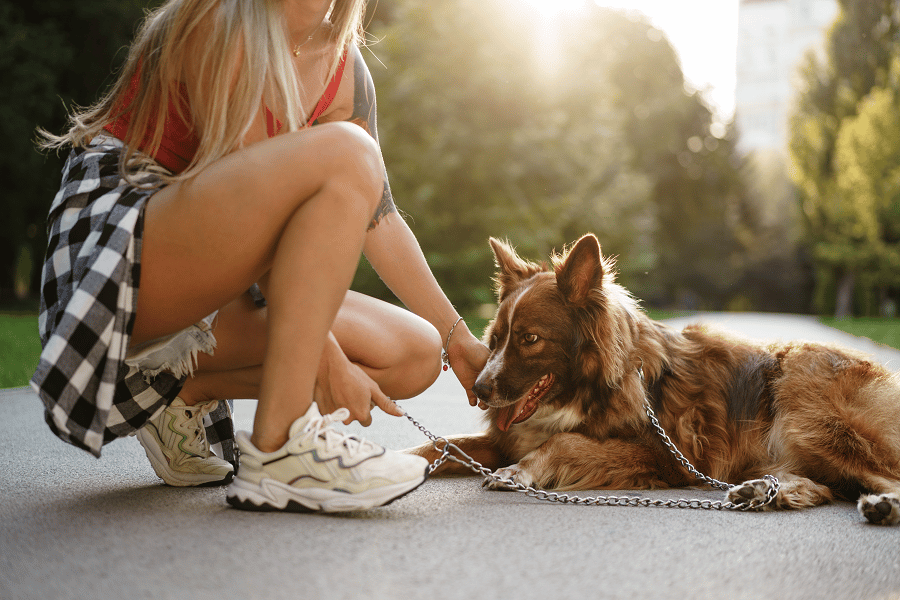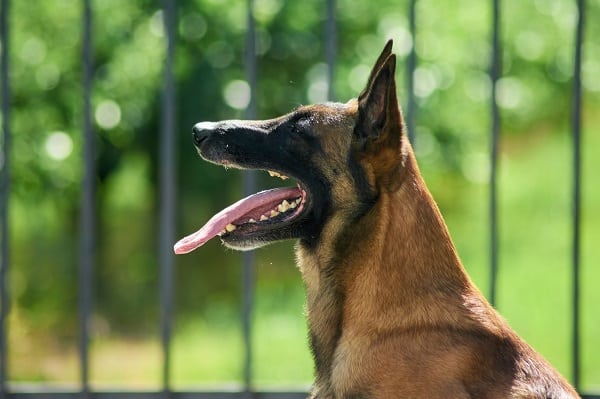If you had to list your closest friends, odds are your dog is at the top of your list. They are loyal, loving, and always happy to see you. But dogs can also be difficult to understand, especially when they are trying to tell you something with their body language. This post will look at some of the most common ways dogs communicate with humans and how to read their signals. Understanding your dog’s body language is essential for keeping them safe and always feeling comfortable around you!
The Way Dogs Communicate With Humans

Dogs are remarkable creatures, and their ability to communicate with humans is one of the things that makes them so special. Dogs have various vocalizations, from barks and growls to whines and whimpers, conveying a different message. For example, a short, sharp bark is typically used as an alarm, while a low, rumbling growl can indicate aggression or fear. By learning to interpret these cues, humans can develop a deeper understanding of what their dogs are trying to say.
In addition to vocalizations, dogs also communicate through body language. The way they position their ears, tails, and eyes can all convey different messages, and these subtle cues can be just as important as the more obvious ones. By learning about dog communication, humans can deepen the bond they share with their furry friends.
How To Read Your Dog’s Body Language
Similar to humans, the way a dog holds their body can reveal a lot about its emotional state. For example, if a dog stands tall with its tail held high, they are likely to feel confident and relaxed. However, if they are crouching low to the ground with their tail between their legs, they may feel scared or threatened. This section will look at home to interpret some of the dogs’ most common body language cues.
Wagging Their Tail

A wagging tail is often thought to be a sign of happiness in dogs, but this is not always the case. The speed and intensity of the wag can give clues about how the dog is feeling. For example, a slow wag with the tail held low may indicate fear or insecurity, while a rapid wag with the high tail may signify excitement or happiness. Paying attention to the whole body language of a dog, not just the tail, can give a more accurate picture of how the dog is feeling.
If the ears are relaxed and the mouth is open, the dog is likely friendly and happy. But if the ears are upright and the mouth is closed or snarling, the dog may be feeling aggressive or threatened. In any case, it’s always best to take caution when approaching a new dog and let the dog approach you first.
Their Ears Standing Up

Dogs use their ears to communicate their feelings and intentions, and understanding how to read this body language can help you better bond with your furry friend. When a dog’s ears stand straight, they’re alert and focused on something. This could be another animal or person, a noise, or something they’re tracking with their nose. If the object of their attention is something they view as positive, such as a treat or a toy, their ears will likely be pointing forward.
If they’re interested in something that makes them nervous, such as another dog or a loud noise, their ears will point backward to help them better hear what’s going on around them. Paying attention to the direction of your dog’s ears can give clues about their thoughts and feelings.
Raising Their Hackles

Most people are familiar with dogs’ primary body language, but some subtle cues can be easy to miss. One of these is when a dog raises its hackles – the hair along its back and neck. This is usually a sign of either fear or aggression, and it’s important to read this cue correctly to avoid potential conflict. There are a few things to look for when determining whether a dog feels scared or angry.
If the hackles are raised along with other signs of fear, such as cowering or lip-licking, then it’s likely that the dog is feeling scared. On the other hand, if the hackles are raised with aggressive cues such as growling or baring teeth, the dog is probably feeling aggressive. In either case, it’s important to give the dog some space and avoid sudden movements that could be interpreted as threatening. By understanding how to read a dog’s body language, you can help to prevent misunderstandings and keep both yourself and your furry friend safe.
Their Paw Movement

Dogs communicate a lot with their paws. For example, a dog that puts its paw on your arm is trying to say, “I care about you.” If a dog lifts its paw in the air, it’s asking for something – usually food! But there’s more to paw communication than meets the eye. For example, dogs will often place their paw on something they want – whether it’s a toy, a person, or a piece of food.
This is known as “claiming behavior.” By placing their paw on something, dogs say it belongs to them. It’s an instinctive behavior that dates back to their wild ancestors, who used their paws to claim mates and territory. So if you see your dog placing its paws on you, don’t be too alarmed – it just means that your furry friend sees you as part of its pack!
Their Posture

When reading a dog’s body language, it is important to take into account the whole picture. This includes the dog’s overall posture and the position of its ears, tail, and eyes. For example, a dog standing upright with its high tail is usually considered alert and friendly. On the other hand, a dog that is crouching with its tail between its legs is generally considered to be fearful or submissive.
Similarly, a dog looking directly at you with its ears perked up is usually considered interested. In contrast, a dog averting its gaze and having its ears pulled back is usually considered fearful or nervous. By considering the dog’s entire body language, you can better understand what the dog is trying to communicate.
Learn To Read Your Dog’s Body Language!
By understanding how to read your dog’s body language, you can better communicate with your furry friend and prevent misunderstandings. Pay attention to all these different aspects of your dog and how they are coming together to understand better what they are trying to say. With time and practice, you’ll be a pro at reading your dog’s body language in no time! Just be sure to keep an eye out for any sudden changes, as these can often be the most important cues of all.